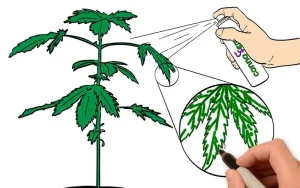Micronutrients in Agriculture play a critical role in crop health and yield, despite being needed in much smaller amounts than primary nutrients like nitrogen, phosphorus, and potassium.
These elements—such as zinc, iron, manganese, copper, boron, molybdenum, and chlorine—are essential for plant metabolism, enzyme function, and stress tolerance. Understanding the importance of Micronutrients in Agriculture can help farmers optimize fertilizer programs and achieve more robust, nutritious harvests.
The Role of Micronutrients in Plant Growth
Although required in trace quantities, Micronutrients in Agriculture are vital catalysts in biochemical processes. For example, iron is a key component of chlorophyll synthesis, while zinc activates enzymes involved in protein production and growth regulation.
Without adequate micronutrients, plants develop deficiencies that manifest as chlorosis, stunted growth, or poor fruit set.
Common Micronutrient Deficiencies and Symptoms
Recognizing deficiency symptoms is the first step to correcting them. Boron deficiency often causes blossom end rot in fruits, whereas manganese deficiency leads to interveinal chlorosis on young leaves. By monitoring crops for these signs, growers can apply targeted Micronutrients in Agriculture to restore balance before yield losses occur.
Recommended Products: CK NPK Complex Fertilizers
Soil Testing and Foliar Analysis
To manage Micronutrients in Agriculture effectively, regular soil and tissue tests are essential. Soil tests reveal total available levels, while foliar analysis indicates what the plant actually absorbs.
With this data, agronomists can recommend precise micronutrient blends—whether through soil incorporation or foliar sprays—to address specific crop needs.
Methods of Micronutrient Application
Micronutrients can be applied via granular fertilizers, chelated forms, or foliar sprays. Chelated micronutrients often exhibit better availability in challenging pH conditions.
Foliar application offers rapid correction of deficiencies and is particularly useful during critical growth stages. Choosing the right delivery method ensures that Micronutrients in Agriculture reach the plant when and where they’re needed most.
Benefits of Balanced Micronutrient Management
Proper use of Micronutrients in Agriculture enhances root development, improves stress resistance (drought, heat, or disease), and increases nutrient use efficiency.
Balanced micronutrient levels also contribute to higher protein content and better-quality produce, meeting both yield and nutritional goals for modern farming operations.
Recommended Products: Unique Fertilizers
Integrating Micronutrients into Nutrient Programs
An effective fertilizer program considers both macro- and micronutrients. Integrating Micronutrients in Agriculture into regular fertilization schedules helps prevent hidden hunger—where plants look healthy but suffer subclinical deficiencies.
Split applications and blending micronutrient carriers with macronutrient fertilizers simplify logistics and ensure uniform dispersion.
Sustainability and Environmental Impact
Using Micronutrients in Agriculture judiciously minimizes environmental runoff and leaching compared to over-application of macronutrients.
Targeted micronutrient management supports sustainable agriculture by reducing waste, lowering input costs, and protecting surrounding ecosystems from nutrient pollution.
Advances in Micronutrient Delivery Technologies
Recent innovations such as nano‑encapsulation and controlled‑release coatings have improved the efficiency of Micronutrients in Agriculture. These technologies ensure a steady supply of trace elements over time, reduce leaching losses, and allow for lower application rates.
Economic Benefits of Micronutrient Management
Investing in targeted micronutrient programs often yields a high return. By preventing yield losses and improving crop quality, farmers can increase marketable output and reduce the need for corrective treatments, making micronutrient applications cost‑effective in the long run.
Challenges and Future Outlook
Despite clear advantages, widespread adoption of micronutrient programs faces barriers such as lack of awareness, testing infrastructure, and upfront costs.
Ongoing research and extension services are critical to overcome these challenges and promote best practices in Micronutrients in Agriculture.
For further reading, check out:
Conclusion
Optimizing micronutrient use completes a comprehensive fertility program. By leveraging modern delivery methods, understanding economic returns, and addressing adoption hurdles, growers can maximize both yield and sustainability.
A strategic focus on these tiny but vital elements ensures healthier crops and more resilient agricultural systems.
FAQs
1. How often should I test for micronutrient deficiencies?
Annual soil and tissue tests—ideally before each planting season—help you detect and correct imbalances early.
2. What’s the fastest way to correct a micronutrient deficiency?
Foliar sprays of chelated nutrients provide rapid uptake, while soil‑applied granular or liquid formulations offer longer‑term correction.
3. Can I apply micronutrients with my regular N–P–K fertilizer?
Yes—blending micronutrient carriers into your standard fertilizer or using combined N–P–K‑micronutrient mixes simplifies application and ensures uniform distribution.









